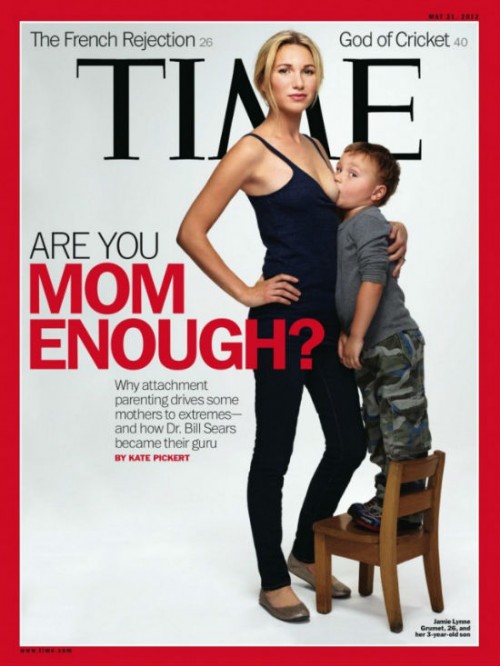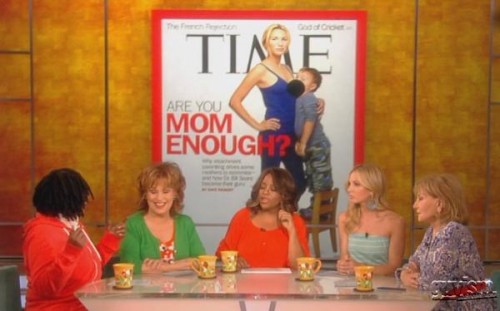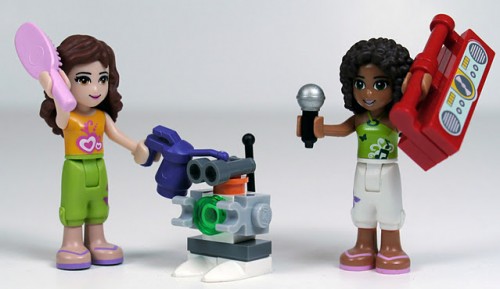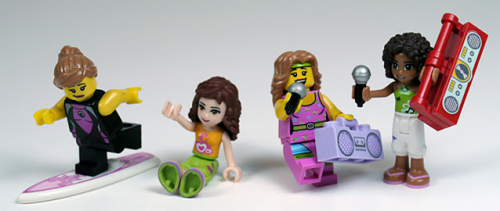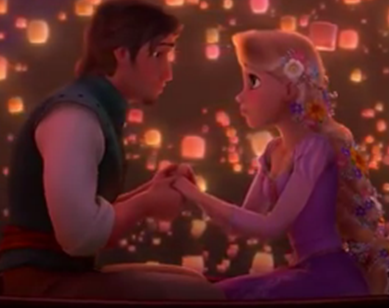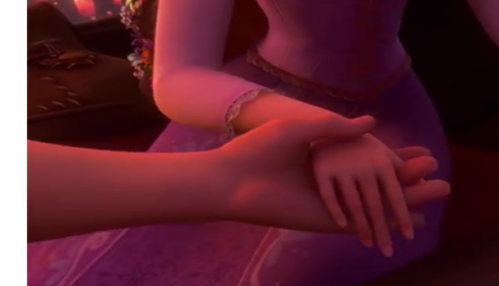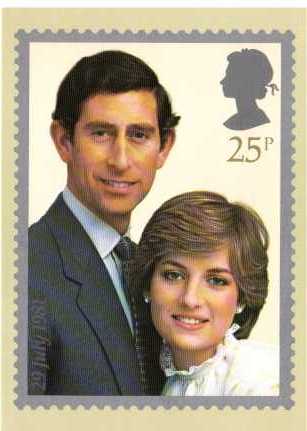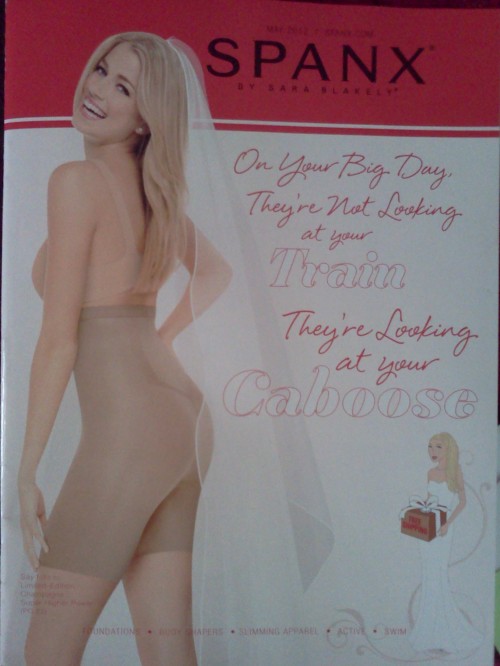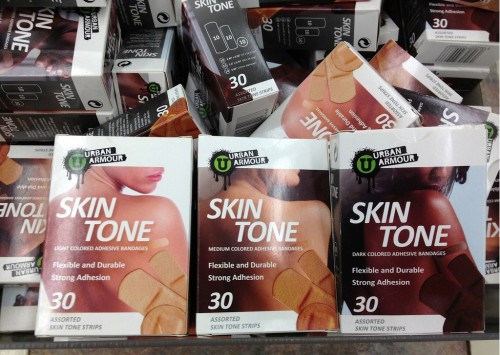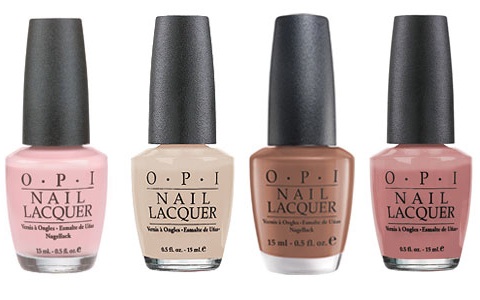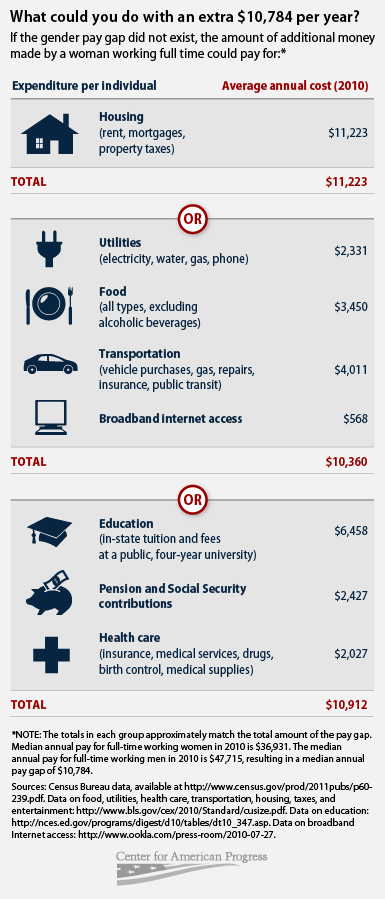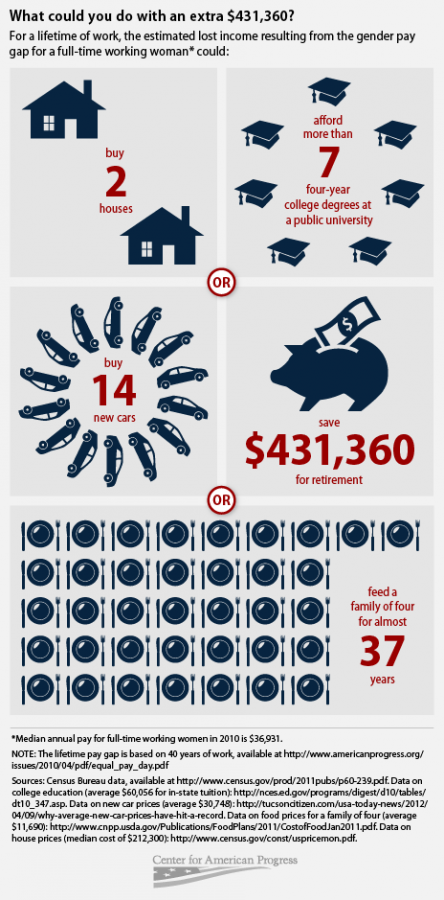Just before Mother’s Day, TIME grabbed America’s attention with a cover image accompanying the headline “Are You Mom Enough?” Its photo featured 26-year-old Jamie Lynne Grumet nursing her 3-year-old son.* The image electrified the blogosphere. With 24 hours there were over 18,000 comments on one site alone. LA Weekly called her a MILF and reported that internet traffic flooding her website caused it to crash.
Within no time, spoofs of the cover appeared. Tiger Mom made a reappearance. “Are You Phone Enough?” plays on the idea of attachment, but between user and electronic device. One site offered “magazine makeovers” and generated a “make your own TIME magazine cover” template.
The responses, though, were mostly negative. In a TODAY.com poll about the image, more than 131,000 people weighed in; 73% saying they would have preferred not to see the image. Saturday Night Live wasted no time in skewering both mother and child. Purportedly, some newsstands covered up the image and when it appeared on some news shows, Grumet’s breast was blurred.
For those for whom the image was offensive, Grumet’s physical attractiveness and her exposed body conflate feeding with sexiness, hence constructing the image of her suckling son with creepy or incestuous undertones — exactly the kind of one-note misconstrual of the breast (for sexual appeal rather than nutrition) that breastfeeding advocates revile. Objections to the image included revulsion that a child — clearly still not a baby — would be connected to his mother’s body this intimately, alongside a fair share who claimed he would surely later be scarred — if not by the experience of cognitively remembering breastfeeding, then by this image circulating through his future school yards. One commentator claimed deep concern that Grumet’s son may “never be better-known for anything than for being a breastfeeding 3-year-old on the cover of a national magazine,” and that the image was one of “psychological abuse,” as well as “an act of media violence against a child” perpetuated by manipulative journalists.
Breastfeeding advocates (so-called “lactivists”) seemed torn. On the one hand, the image drew attention to their cause: the benefits of long-term breastfeeding, including both nutritional benefits and mother/child bonding. On the other hand, it was clear this was being done for shock value and exploitative purposes. Grumet’s hand-on-hip, defiant stance and her son’s stepladder perch hardly convey the sense of intimacy that breastfeeding can offer. Most agreed that TIME‘s choice of a 26-year old, blonde, white woman who looks like a model was a deliberate move meant to provoke. In a “Behind the Cover” online sidebar photographer Martin Schoeller admits that he posed Grumet and her child upright in order to “underline that this was an uncommon situation” (i.e., to be provocative). The story accompanying the article doesn’t mention Grumet at all; instead, it profiles 72-year-old Dr. William Sears, the “father” of the attachment parenting movement. All this exacerbated the sense that the sensationalistic pose of Grumet’s lithe body and her son’s latch was generated just to move copies of the magazine.
By capitalizing on shock value and American squeamishness about breastfeeding, there is no doubt the image will continue to generate reaction for a while longer. And it likely sold magazines. It inspired a few “print is not dead” articles, with one writer calling the cover “a shocking stroke of genius” that serves as a testament that a powerful image can still generate buzz and boost magazine sales.
Unfortunately the image may ultimately harm the cause it represents. The relationship between media and activists is a fraught one. Activists need media attention, but far too often media attention can warp and undermine activist projects. It remains to be seen whether the cover will be a net good or bad for lactivists.
*A few people wondered about why TIME didn’t feature Grumet’s older, adopted child, who she also breastfeeds. One guess is that bold as the cover image is, even TIME‘s editors were afraid to take on the implications of a white woman nursing a black child.
————————
Elline Lipkin, PhD, is a Research Scholar with UCLA’s Center for the Study of Women. She is the author of Girls’ Studies and The Errant Thread, recipient of the Kore Press First Book Award for Poetry. She lives in Los Angeles and has written for the Ms. magazine blog, Salon.com and Girl w/Pen, as well as other contemporary publications. She tweets at @girlsstudies.

